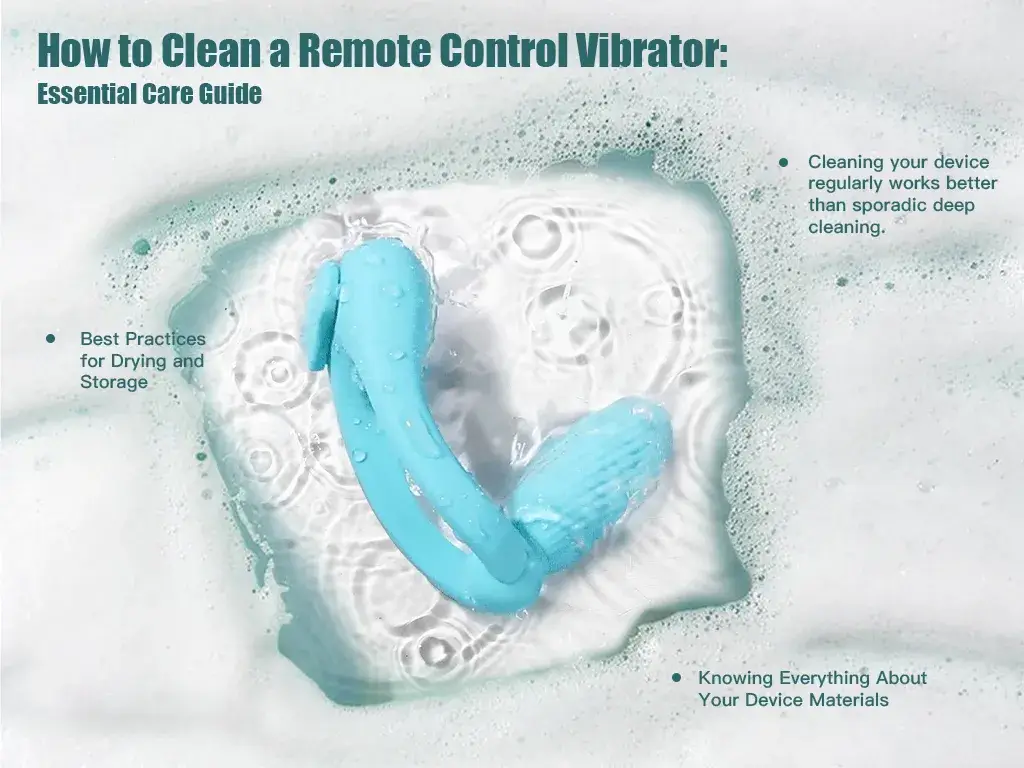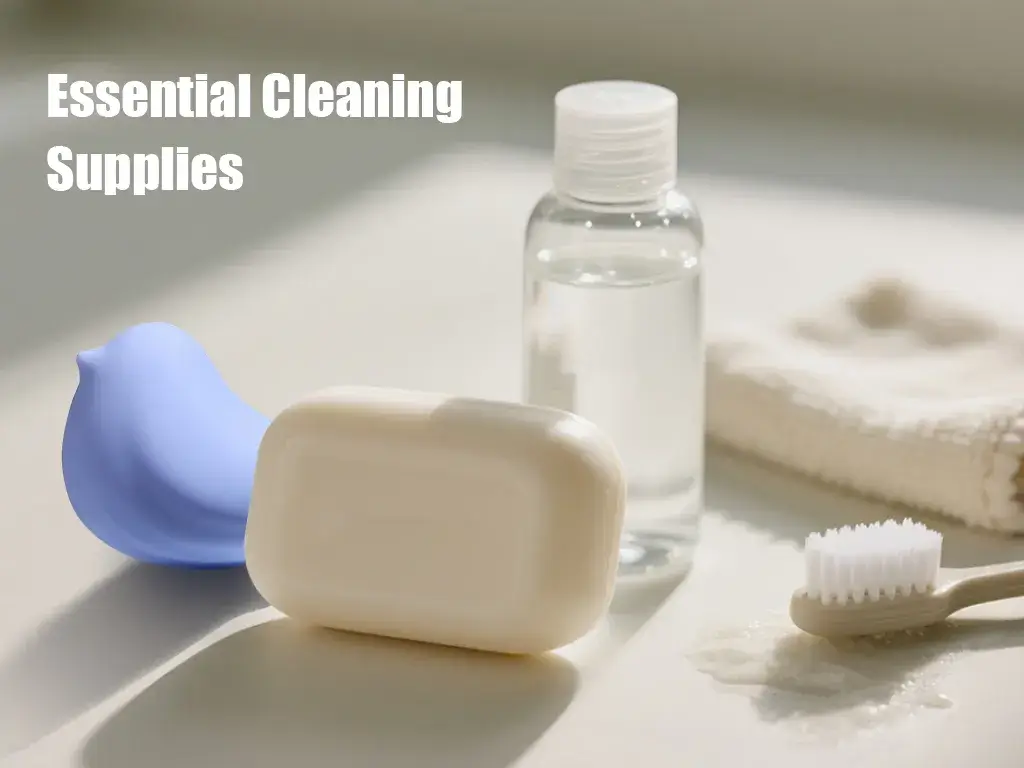How to Clean a Remote Control Vibrator: Essential Care Guide

Keeping your intimate wellness devices clean is not only about maintaining their functionality – it’s also about your own health and making them last for years to come. Remote control vibrators and couple vibrators need special cleaning protocols distinctly different from traditional intimate products. And that’s due to their electronic elements and design intricacies.
It’s natural to feel a bit hesitant about how to clean these high-tech devices, and considering the cost, no one wants to damage their expensive electronics while trying to be hygienic. Fortunately, keeping your devices clean and safe is easy with the right information and approach, plus you likely have all of the right tools at home already.
Knowing how to maintain these devices is even more important for couples who use them regularly or for couples who share control over distances. Improper hygiene may lead to infections, unpleasant odors, and a short lifespan of devices, and ultimately affect the intimate experiences the devices are designed to foster.
Knowing Everything About Your Device Materials
Before getting up to the cleaning protocols, it is helpful to know what your device is actually made of. Most quality remote control vibrators usually use medical-grade silicone which is also non−porous and body-safe. Meanwhile, budget−friendly products may use TPE (thermoplastic elastomer), rubber blends, or other products that may require different cleaning considerations.
Medical-grade silicone is typically preferred for those intimate devices because they are non−porous and make a safer environment that doesn’t harbor bacteria growth. Also, their designs can withstand heavy-duty cleaning without deteriorating the product. Medical-grade silicone can also hold up to water-based cleaners and tolerate temperature changes while retaining its shape and structural features.
Most devices have electronic components that are often stowed away in waterproof casings. Still, the level of water resistance varies from product to product, and understanding the different levels is highly important. Some latex can be fully submerged in water when cleaning while some of them can only be cleaned lightly at the surface with damp cloths for just basic cleansing purposes.
The manual and manufacturer specifications from each product should be consulted for information about how to clean and maintain your product properly.
Many devices also have multiple textures, ridges, or attachments that can harbor bacteria if not cleaned appropriately. These models will have to be considered when cleaning to ensure that proper hygiene is maintained.
Essential Cleaning Supplies

If you want the best results and efficiency in cleaning, you need to gather all the important supplies. You will need mild, unscented anti-bacterial soap or “specialized toy cleaner,” clean water, soft, lint-free cloths or paper towels, and if you want to be thorough, a soft-bristled toothbrush for textured surfaces.
Never use harsh or abrasive chemicals, including bleach, alcohol-based cleaners, or anything with a fragrance or dye. All can degrade silicone products over time and may irritate bodily areas if residual remains inside the product. Avoid oil-based cleaners as they can degrade certain materials and create breeding grounds for bacteria.
Specialized intimate device cleaners are convenient and specifically made for these products. However, they are not absolutely essential. With a gentle antibacterial soap, you will get the same results when used appropriately.
If you intend to store cleaning items for long-term hygiene, clean, dry storage bags/containers are better as they prevent dust accumulation and cross-contamination if you have multiple devices.
Step-by-Step Cleaning Process
- To begin, turn off your device completely or disconnect it. Remove all detachable parts: charging cables, remote controls, interchangeable attachments, etc. These pieces may each require their own cleaning processes.
- If the device is waterproof, your first step is to rinse off the device under running warm water: not too hot that it melts the electronic seals or too cold that it can’t run off bodily fluids and lubricants effectively.
Note: The water temperature should be comfortable for your hands. Again, the goal for any surface is to get it clean, get off, and wipe away the contaminants from the surfaces.
- Once the device is rinsed, use a small amount of mild soap applied directly on the device or the gloved hands, and gently rub the entire surface to remove the contaminants. Pay special attention to textured surfaces, seams, and all gaps and crevices where bacteria or germs may accumulate.
A soft toothbrush is a handy aid when cleaning wash and is more effective in removing contaminants from the surface.
- If the device is not completely waterproof, a damp cloth with soap will need to be used instead of the water, take care not to allow water to contact the device completely. Every surface must be wiped in the soap and rinsed thoroughly. The electronic components like USB-end plugs/jack and charging ports should be free of any moisture.
- You must rinse well and thoroughly under running water (for waterproof) or with a clean damp cloth (for water-resistant devices). Soap residues on the surfaces can cause irritations so it’s important to completely remove them.
- Clean the charging ports with cotton swabs and a soap and water solution, careful not to let moisture in that could damage connections.
- For a couple vibrators shared with other users, both should follow consistent cleaning routines to protect their health and extend the lifespan of the device.
- Cleaning your devices before and after every session is the best option for optimal hygiene for an app-connected experience.
Best Practices for Drying and Storage
Proper drying eliminates the chance of bacterial growth and protects the internal electronics from moisture damage.
- First, pat the device dry with a clean and lint-free cloth, then allow it to air dry completely prior to storage. Depending on the design complexity of your device, the air drying process usually takes 15-30 minutes.
- Never use hair dryers or other heat sources to hasten the drying of your device. Excessive heat can damage the material and internal electronics. Likewise, never store devices while they are still damp – doing so can create a favorable environment for mold and bacteria to flourish.
- When it comes to the longevity of your devices, the location of storage matters a lot. Select a cool and dry location away from direct sunlight or extreme temperature changes. Many users find that dedicated storage boxes or drawers work well as they keep the devices clean and are not easy to see.
- If you are storing multiple devices together, make sure they do not touch one another directly. Different materials can react with one another over time, which can degrade or discolor the device.
Troubleshooting Common Problems
- If you can still smell unwanted odors after cleaning the device, you probably have bacteria build up within the textured areas, in which case you may need to clean the device more often and focus more on seams and hard-to-reach areas.
- If devices stop working after cleaning, it probably means that water/moisture has entered the electronics. In that case, try removing the batteries and let them dry in a warm area for 24-48 hours.
- If the device has discoloration, this may be due to contact with compatible products. On the other hand, surface stickiness will normally mean you need to replace the device.
- It is best to clean devices on a regular cleaning schedule, rather than deep cleaning sporadically.
Professional recommendations
Healthcare providers stress that adequate device hygiene minimizes risk for UTIs, bacterial vaginosis, and other product or bodily concerns. The cost of implementing quality cleaning practices far exceeds the cost of treating or preventing infections.
Companies like HERCARESS design their products with easy cleaning in mind. They use quality materials and smooth surfaces that are easy to maintain. An ergonomic design minimizes areas where bacteria can grow while providing the users with the functionality they expect.
Cleaning your device regularly works better than sporadic deep cleaning. Make it a habit to clean your device regularly. Doing so fosters good, consistent hygiene that doesn’t feel burdensome.
